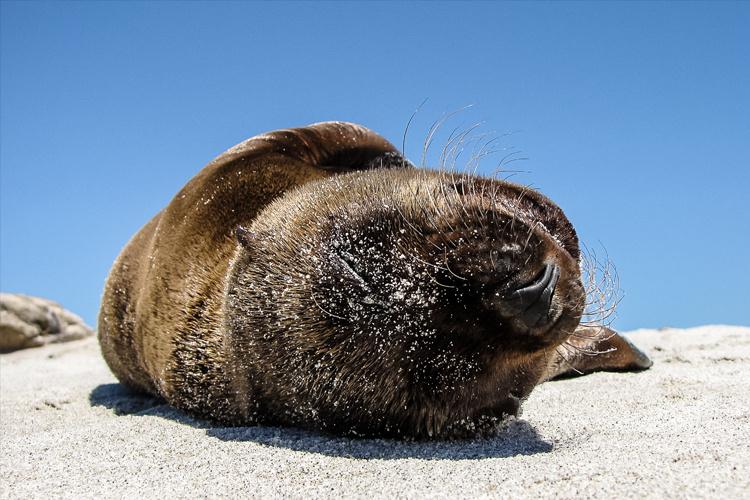NOAA Fisheries is responsible for monitoring the California sea lion population under the federal Marine Mammal Protection Act (MMPA). Under the MMPA protection, California sea lions increased from low population levels prior to the MMPA to a healthy robust population that is not considered depleted, threatened or endangered.
California sea lions range along the west coast of North America from northern Mexico to southeast Alaska. The population is comprised of five genetically distinct populations: the United States population (U.S. or Pacific Temperate) that breeds on offshore islands in California; the western Baja California population that breeds offshore along the west coast of Baja California, Mexico; and three populations (southern, central and northern) that breed in the Gulf of California, Mexico. Males migrate long distances from the colonies during the winter whereas females and juveniles remain close the breeding areas.
Annual monitoring of the population abundance, vital rates, health, diet and foraging behavior provides critical scientific information needed to advise management decisions for conservation of this species.
Population Abundance: How Many Are There?
Each year, during the breeding season, we conduct land-based and aerial surveys to count live California sea lion pups at U. S. colonies to estimate the number of births. Several land-based surveys are conducted to count the number of pups that die after birth at a two of the colonies. The total number of dead pups from the land surveys and the average number of live pups counted from the land-based and aerial surveys provide an estimate of the number of pups born and a mortality rate. The data are used in stock assessments and models of population growth.

Five branded adult female California sea lions in a breeding group at San Miguel Island, California.
Vital Rates and Health Monitoring: How Do They Survive and Reproduce?
Measuring vital rates like survival and reproduction is critical for evaluating the health of the California sea lion population. We use mark-recapture techniques to estimate vital rates of the population. Each year, we mark about 1% of the pups born at San Miguel Island with hot brands and flipper tags, then we resight the marked animals during subsequent summers and create resight histories over the lifetime of individual animals. These histories are then used in models that provide estimates of survival, reproduction, and longevity and describe how these vital rates are affected by changes in the ocean environment, diseases and body condition.
Healthy California sea lions are a reflection of a healthy ocean environment. We monitor the occurrence of diseases in the wild populations such as domoic acid toxicity, leptospirosis, and hookworms to better understand how diseases affect vital rates. We partner with rehabilitation centers to understand the regional distribution of disease outbreaks and the prevalence and pathology of the diseases.

California sea lion female with her pup and a satellite telemetry instrument attached to her fur.
Diet and Foraging Behavior: Where Do They Go and What Do They Eat?
California sea lions spend 75% of their lives at-sea; it’s where they eat. Their behavior when they are at-sea impacts all other aspects of their population dynamics. We study diet directly by collecting fecal matter from haulouts and identifying prey from hard parts recovered. We use stable isotope and fatty acid analysis of different tissues to describe diet on different time scales from weeks to months to lifetime. From this data, we describe how the diet changes with changing ocean conditions that affect the availability of fish and cephalopod (e.g., squid) prey, and how diet shifts affect condition, survival, and reproduction of the population.
We use satellite telemetry to track the movements of California sea lions when they are at sea. The instruments gather data on location, diving behavior, and other activities that animals engage in when they are foraging. When paired with biological and physical oceanographic information like bathymetry and sea surface temperature, the data provide information on habitat use and requirements. When combined with diet, population abundance, and vital rates information, telemetry data provide an integrated view of how behavior at-sea affects population trends.
Hot Topics: What Are the Most Important Conservation and Management Issues?
- Management of interactions between MMPA protected California sea lion males and endangered salmonids listed under the Endangered Species Act
- Monitoring population responses to environmental changes in a warming ocean

Branded California sea lion male with satellite telemetry instrument with flotation device glued to fur.




